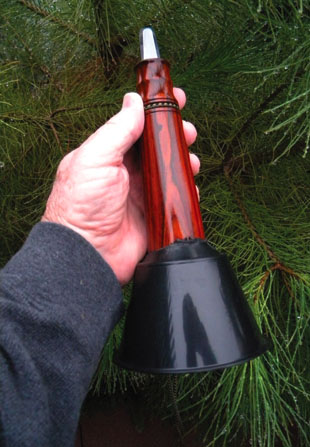 Howling Pitches and Tones
Howling Pitches and Tones
One of the best features of howlers is the various change in pitches and tones you can make with them once you learn the basic high, quavering call. For example, if you want to produce a female looking for a companion, bite down slightly on the reed with your teeth just a quarter inch back from the barrel. This changes reed vibration, and produces the higher, thinner howl of a female. Some callers purchase a second howler with a shorter barrel to achieve this higher pitch. Even though the reed, sound board and mouth piece are the same length and width as the larger call, the shorter barrel produces the higher pitch of females.
You can even turn these versatile calls into standard distress calls by backing off on air pressure, volume and duration, thereby mimicking the cries of a rabbit in distress. This takes short, quick bursts of air for a faster tempo.
Howling during breeding season
As a general rule, coyotes do most of their breeding and hunting for females between January and March. Males do a great deal of wide-range traveling during these months while searching for a mate and calling.
When howler calls mimic the higher pitched yelps, yips and howls of females, they become twice as deadly at these times. You should use long-drawn, high-pitched howls as openers, and, once you get an answer, respond immediately. As the male calls and comes closer, switch to high, shorter yips and yelps to encourage him to keep moving toward you. You do this by biting down on the reed halfway back and blowing in shorter, faster spurts while still maintaining constant air pressure over the reed. Once he comes into view, stop calling and let him come into gun range.
Don't overlook the time just two months after breeding. A howl from a strange coyote during denning season triggers a powerful protective urge, and you may have a pair charging into range.






